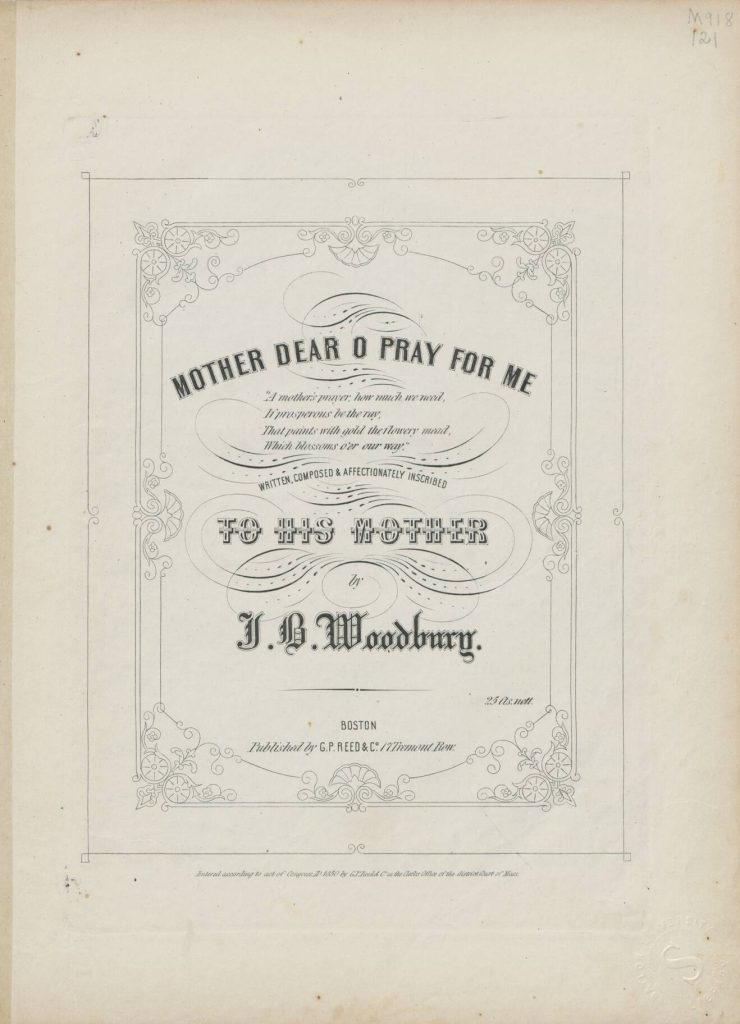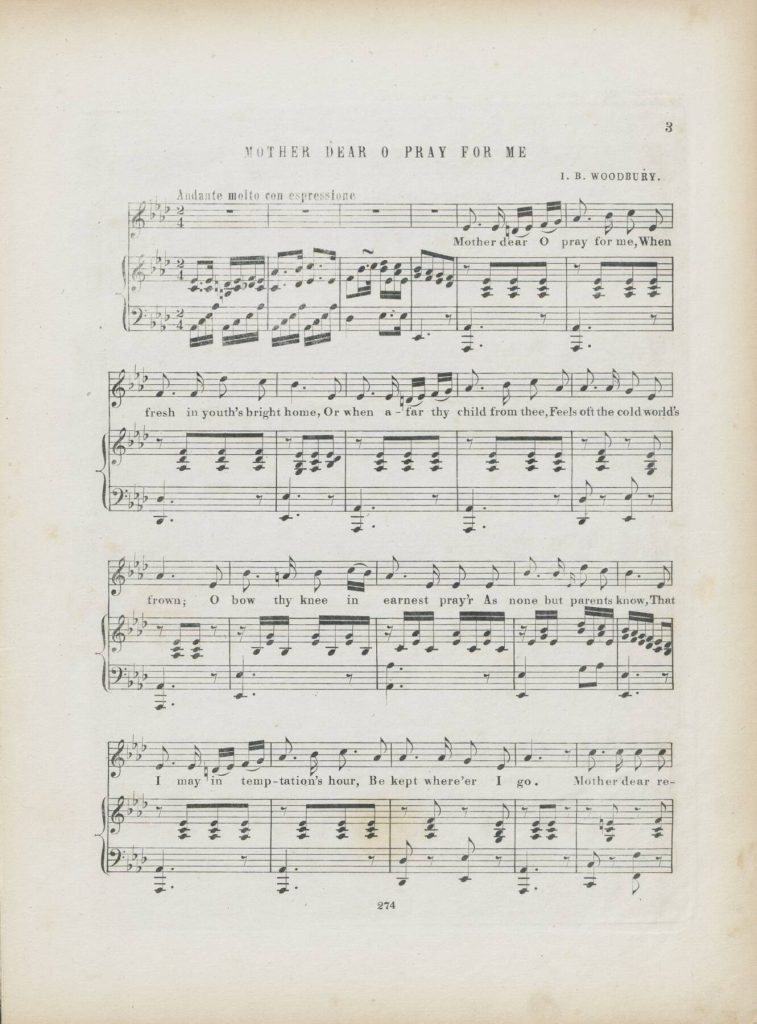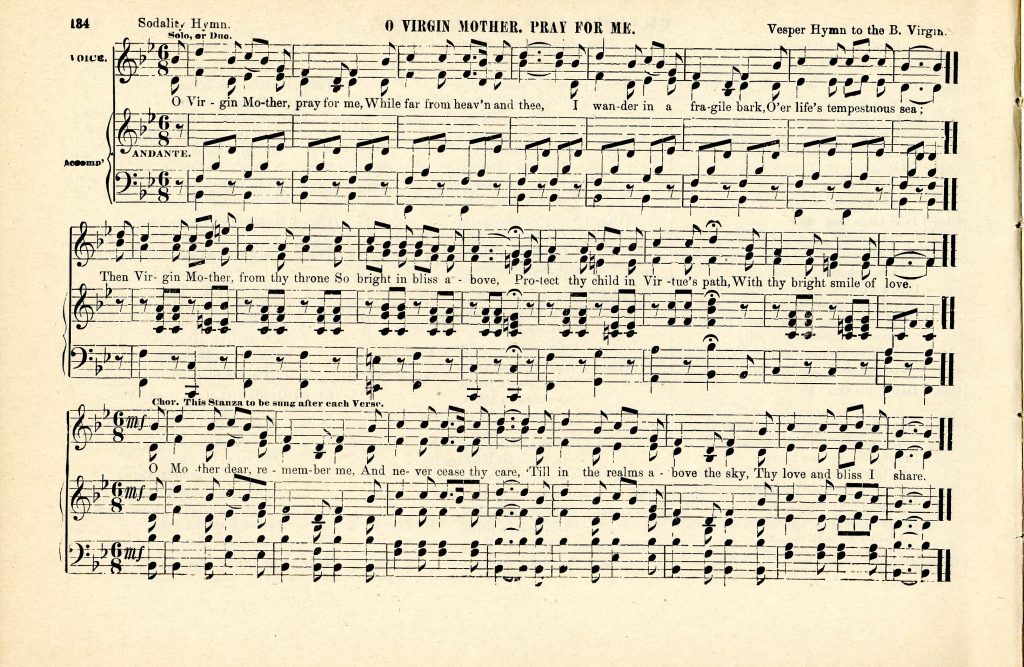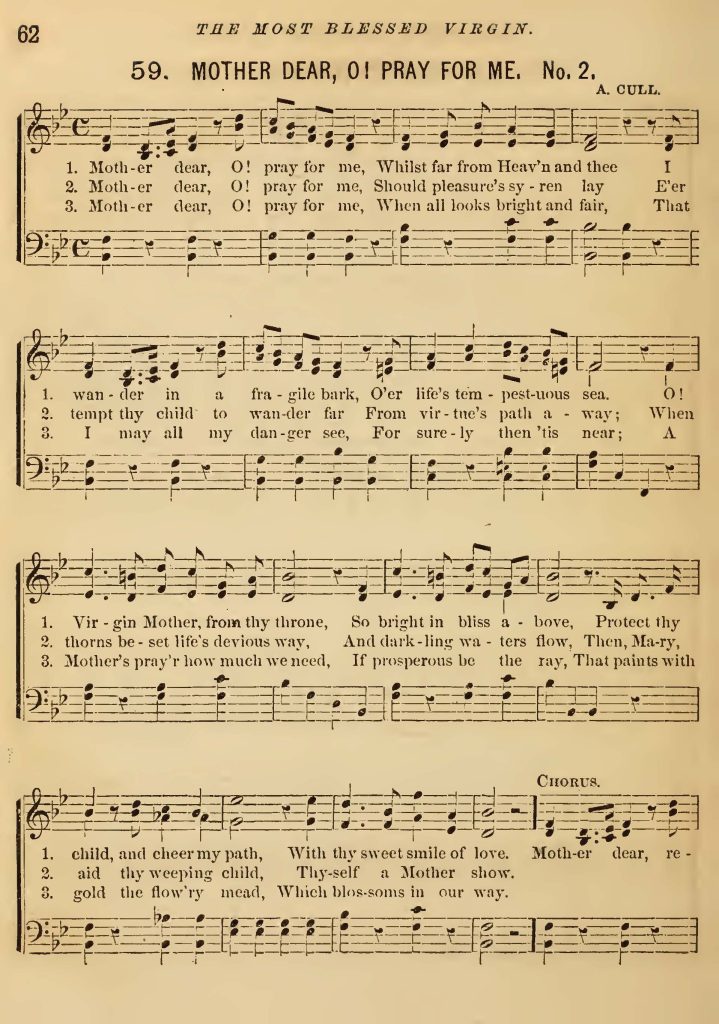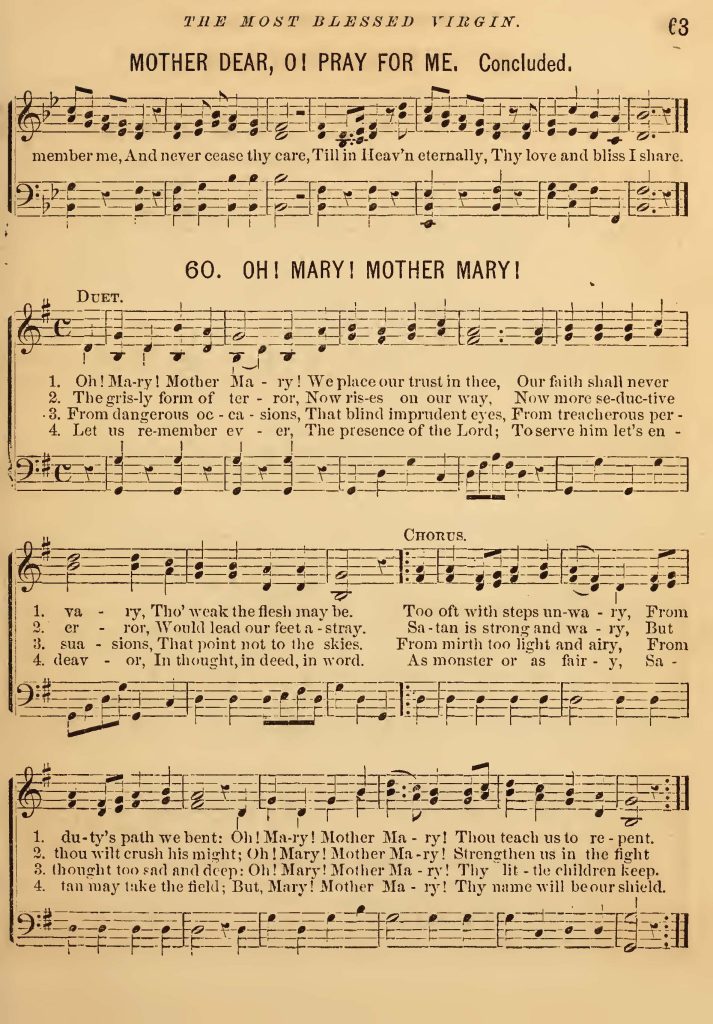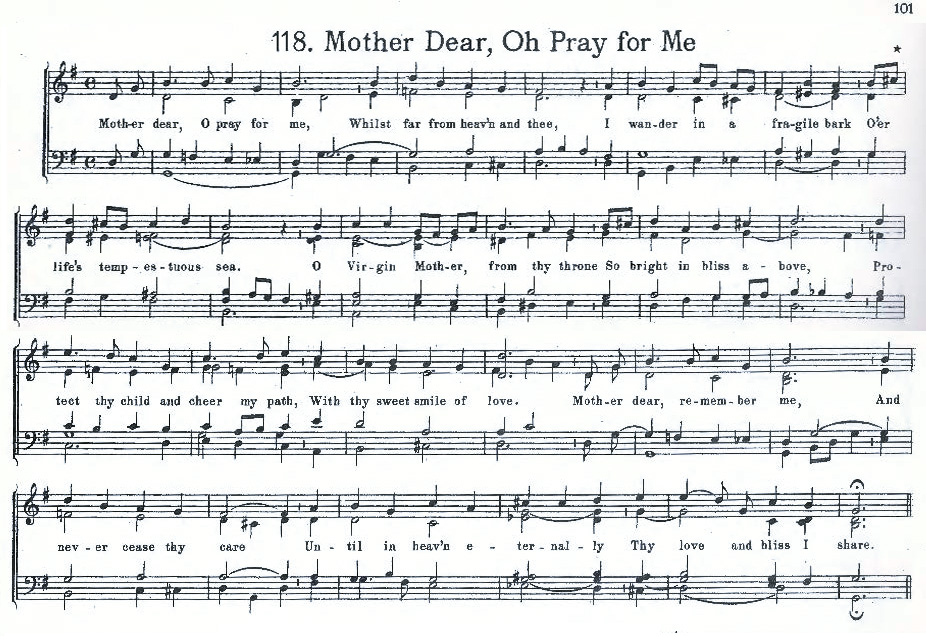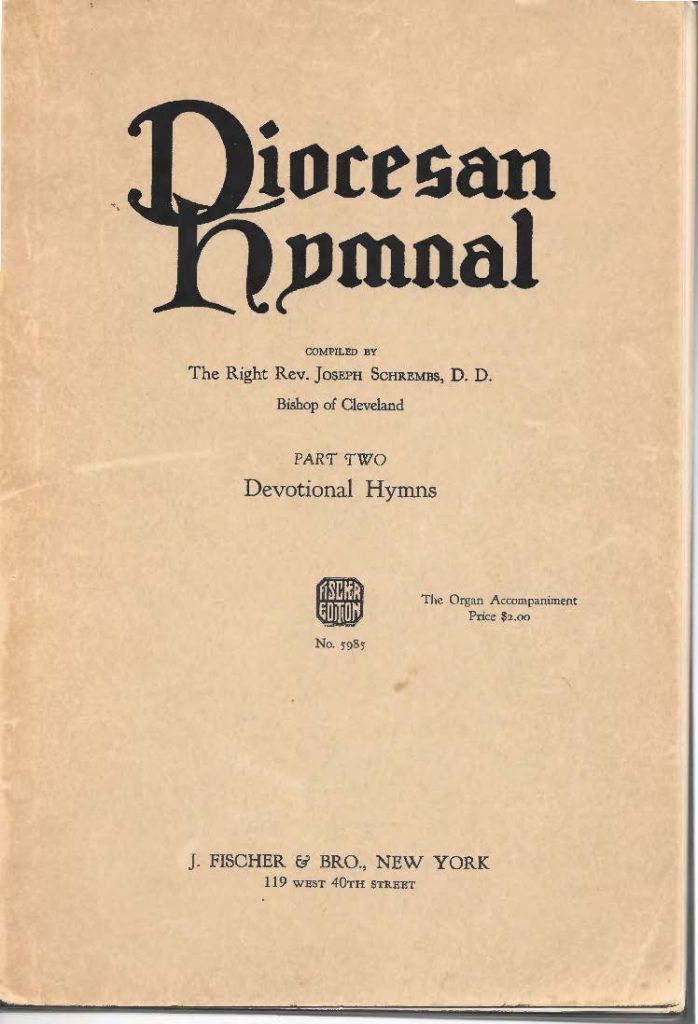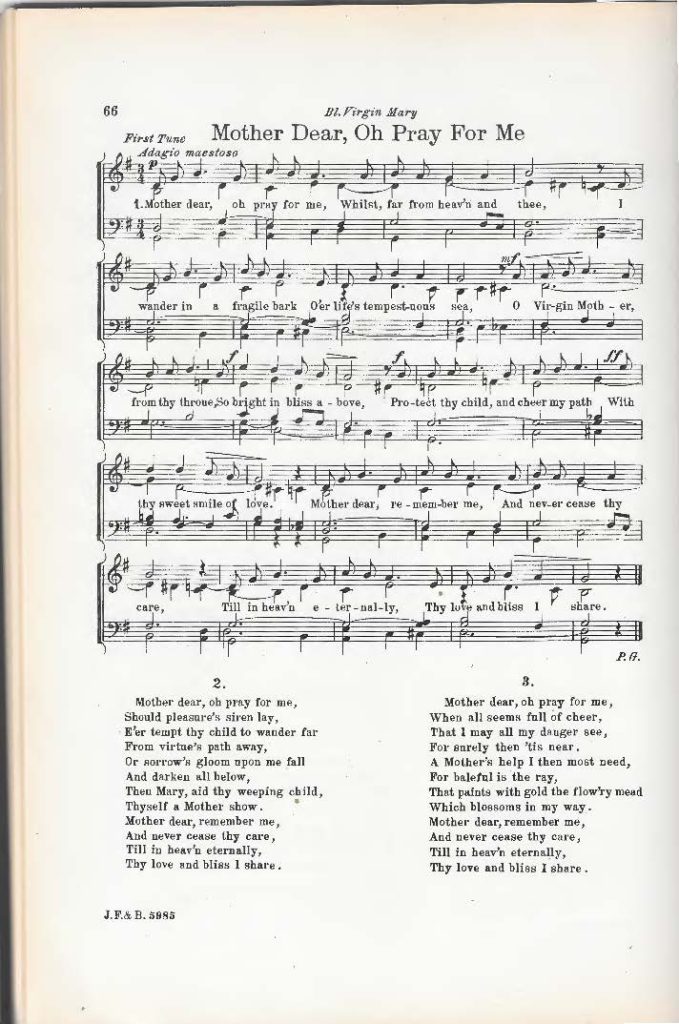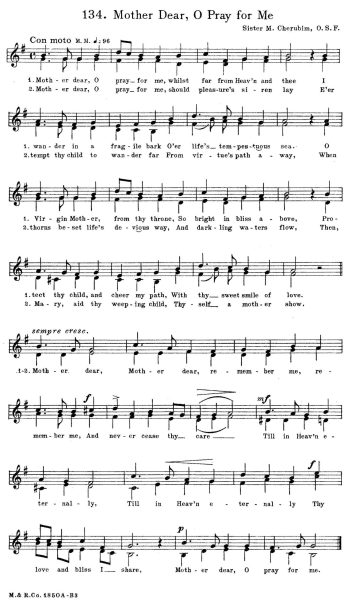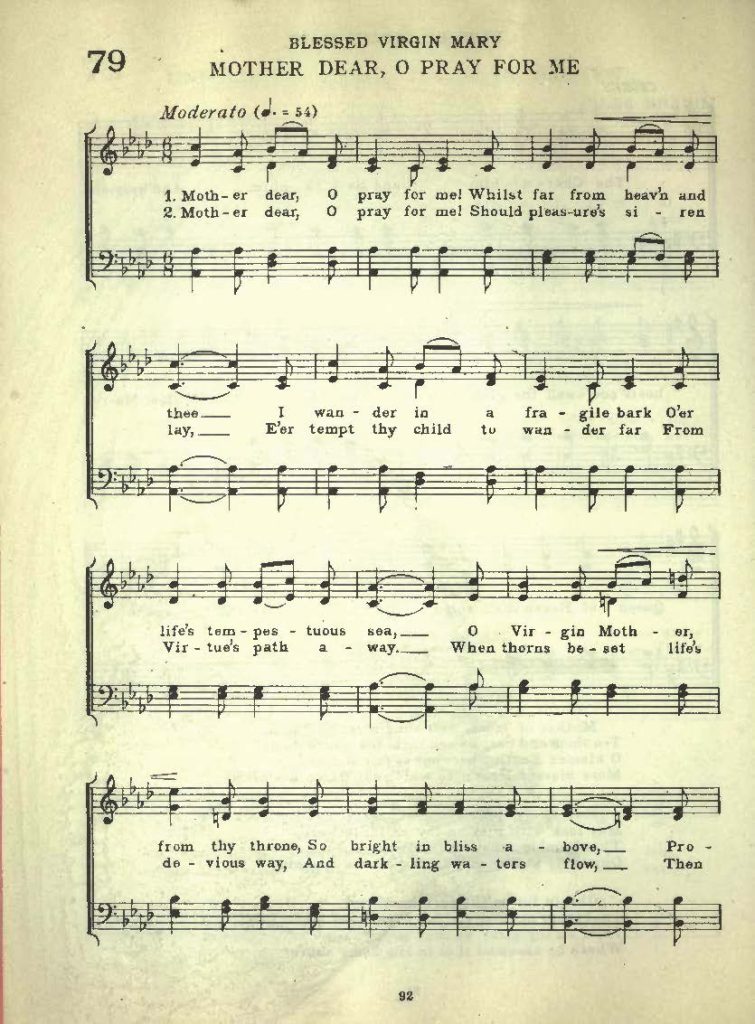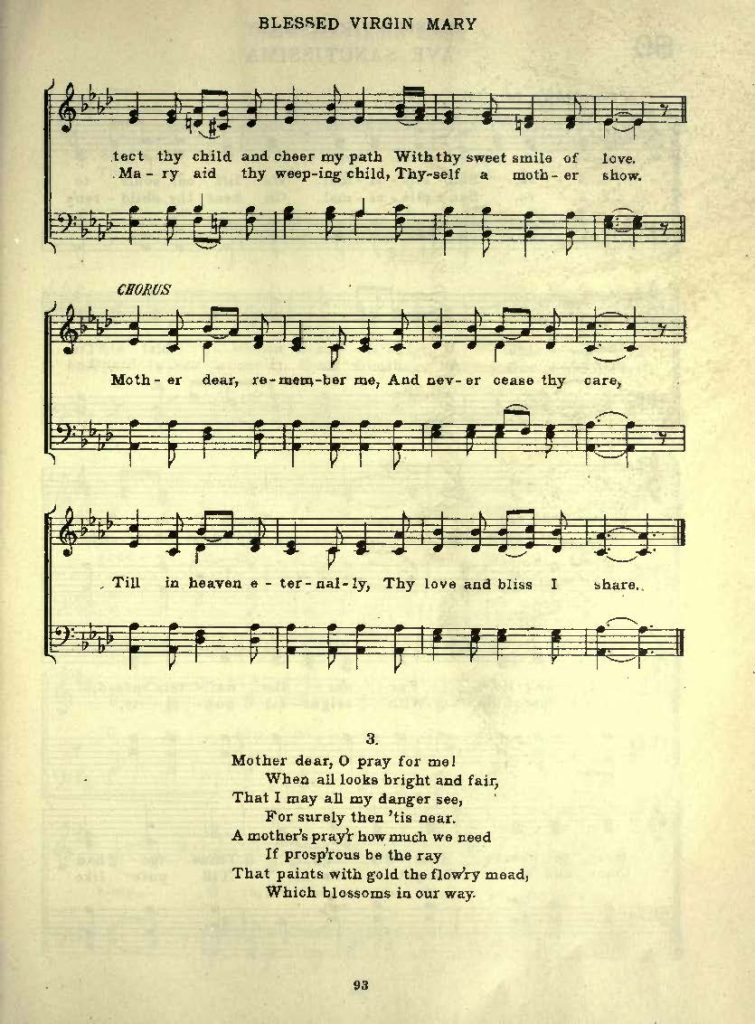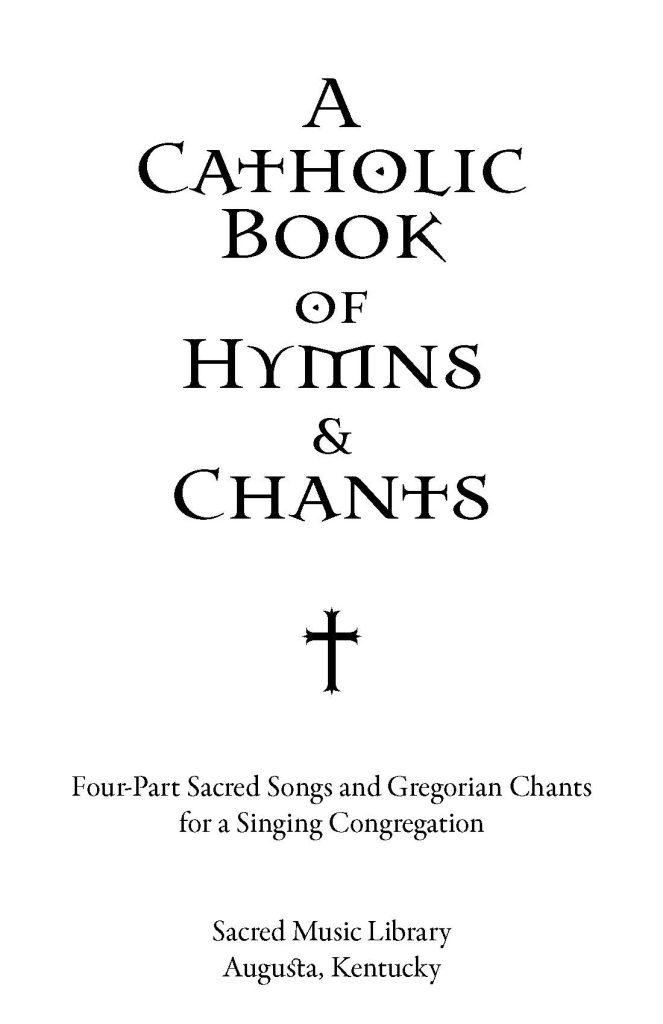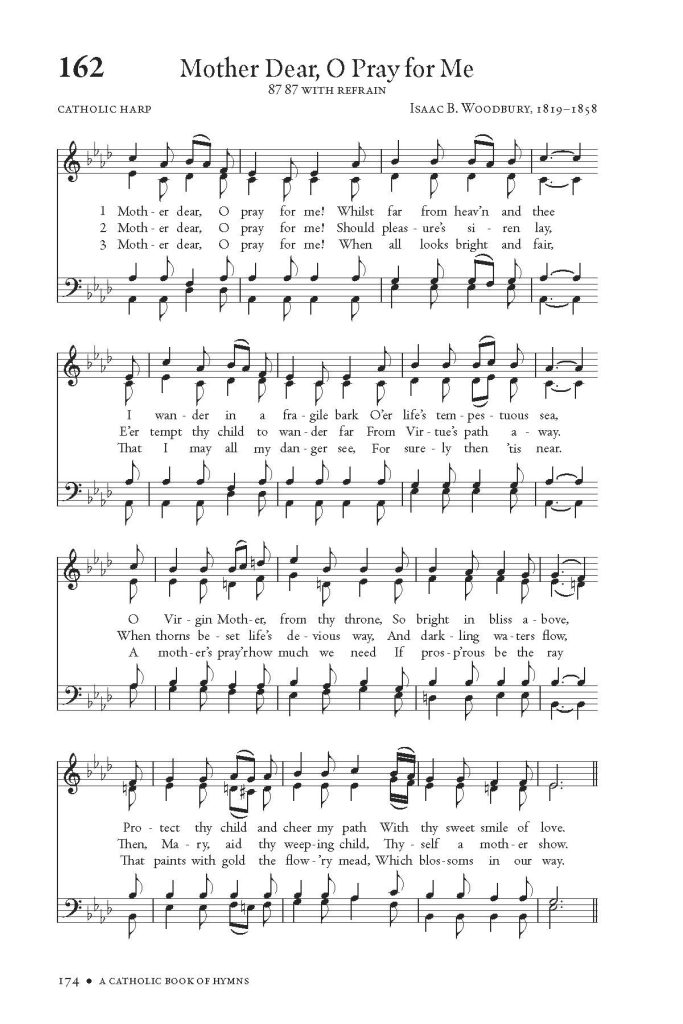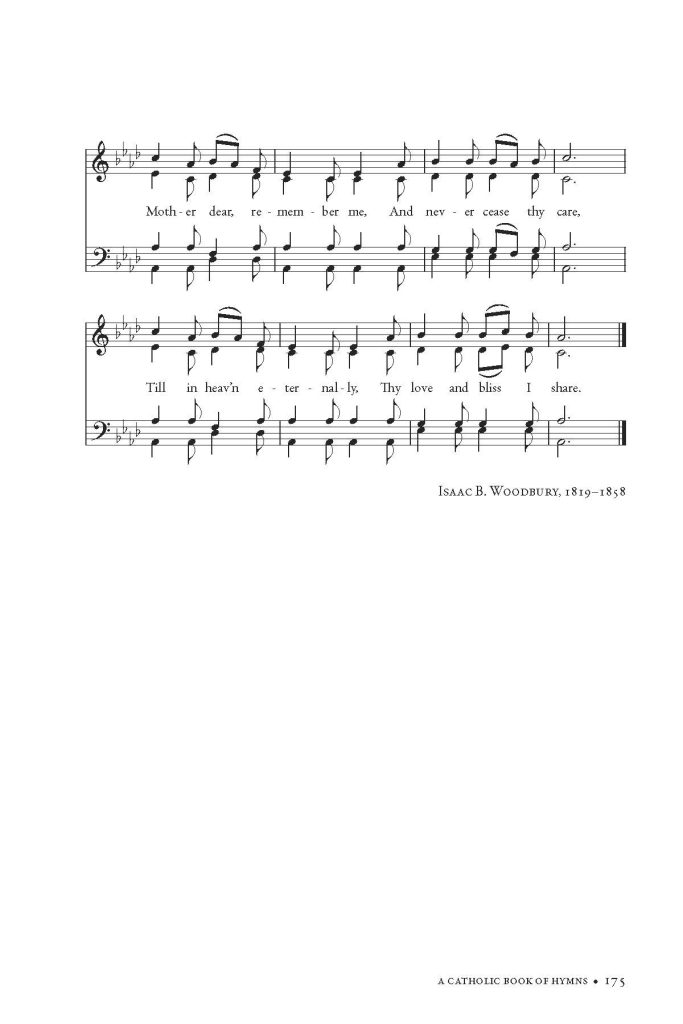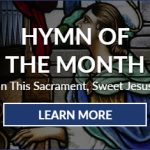Isaac B. Woodbury (1819-1858) composed the text and the original tune of this ballad and dedicated it to his own mother. It was published as sheet music by G. P. Reed & Co., of Boston in 1850. Isaac was a teacher, composer, and publisher of church music. He was born in Beverly, Massachusetts, and studied music in Boston when he was a young boy. By age nineteen he was in London and then Paris furthering his study of music. He returned to America and published several tune books. Isaac was the organist and director of music at the Rutgers Street Church and editor of the American Monthly Musical Review. He is best known for the hymn books THE DULCIMER: or the NEW YORK COLLECTION OF SACRED MUSIC, 1851 and THE THANKSGIVING, 1857.
The Catholic verses and melody that became traditional to this hymn first appeared in PETERS’ CATHOLIC HARP, 1863 and was captioned O Virgin Mother, Pray for Me.
The revised version also appeared in the SACRED WREATH, 1863. Father Edward Sorin, S.J., was the co-editor of the SACRED WREATH and the translator of many hymns. He was also the first editor of The Ave Maria, a weekly Catholic magazine. It is possible that Father Sorin, or Father Felix Barbelin, S.J., altered the text and composed the traditional Catholic melody. Father Barbelin who first made the singing of Catholic hymns popular in Philadelphia also established what would become May Crowning’s and May Processions in this country.
Another well-known hymn-writer whose name and contributions have been forgotten in the history of Catholic musicians may have been responsible for the revised hymn text. She was a close friend to both Father Sorin and Father Barbelin. She was a regular contributor to The Ave Maria, a weekly Catholic magazine and helped to enlist other men and women in the field of Catholic literature to contribute.
She was the author of the Memoir of Father Felix J. Barbelin, S.J., founder of the Sodality of the Blessed Virgin Mary in Philadelphia, and the Life of Sister Mary Gonzaga Grace of the Daughters of Charity of St. Vincent De Paul. To learn more about this Catholic hymn writer and her contributions to Catholic music follow the link given here: Daughter of a Mighty Father.
The hymn next appeared in the CATHOLIC YOUTH’S HYMN BOOK, 1871 where it gained greater popularity, but it was from the ST. BASIL’S HYMNAL that the hymn gained wide use rather than its original source. This hymn would become one of the most beloved Catholic novena hymns of the late nineteenth and twentieth century period.
The Melodies
Apart from the melody that became traditional, I found four other melodies for this hymn. The first melody was composed by Augustus Cull (ca. 1865). He was a German composer and arranger living in New York and was particularly active during the American Civil War. His works included polkas, ballads, and various arrangements of hymns and national songs. Most of his compositions were published by Horace Waters, a music publisher living in New York City.
A second melody appeared in the 1925 edition of Sursum Corda – A Collection of Hymns for the use of Catholic Schools. This collection was compiled by the Sisters of St. Francis from Stella Niagara, New York, with organ accompaniment by Father Florian Zettel, O.F.M. (1879-1947). He was the organist at the Church of the Ascension in Portland, Oregon. The star in the upper right of the hymn indicates an original melody.
A third melody was composed by Cleveland Ohio’s Bishop Joseph Schrembs, D.D., (1911-1945) and it appeared in his Diocesan Hymnal Part Two – Devotional Hymns. Bishop Schrembs was elevated to Archbishop in 1935 and hosted the Seventh National Eucharistic Congress in Cleveland in the same year. The melody was arranged by Monsignor Peter Griesbacher (1864-1933). Msgr. Griesbacher was responsible for a large number of harmonization’s of the hymns found in the Diocesan Hymnals. He was German born and ordained a priest in 1886. He edited a number of publications of Catholic church music and has composed several mass settings, a number of cantatas, various choral works, and organ manuals.
A fourth melody appeared in the Alverno Hymnal and Choir Book Part Three – Hymns for Low Mass. The Alverno Hymnal consisted of three volumes and was compiled by Sister Mary Cherubim Schaefer, O.S.F. (1886-1977). Her musical accomplishments are many. She was a regular contributor to the Caecilia Magazine in the late 1930s.
Other Catholic Hymnals
In addition to the hymnals mentioned so far, Mother Dear, O Pray for Me appeared in the following Catholic hymnals: LAUDIS CORONA (1880 and 1885); ST. BASIL’S HYMNAL (1888 thru 1953); the HOLY FAMILY HYMN BOOK, 1904; the SUNDAY SCHOOL YOUTH’S MANUAL – CANTICA SACRA, 1908; the CROWN HYMNAL, 1912; the DE LA SALLE HYMNAL, 1913; MANUAL OF CATHOLIC HYMNS, 1916; HYMNS used by the Pupils of the Sisters of Notre Dame, (1920 and 1948); SELECTED HYMNS, 1930 compiled by the Sisters of St. Joseph of the Archdiocese of Boston; the CATHOLIC SCHOOL HYMNAL, 1930; ST. JOSEPH’S HYMNAL, 1930 compiled by the Sisters of St. Joseph, Michigan; A CATHOLIC HYMN BOOK, 1932; NOVENA HYMNS for Soldiers and Sailors, 1943 with variation Mother Dear, O Pray for Them; MANUAL OF HYMNS FOR CATHOLIC SCHOOLS, 1948; the PARISH HYMNAL, 1954 compiled by St. Francis Parish in Cleveland, Ohio; THE CATHOLIC CHAPEL HYMNAL* (1944 thru 1968); OUR PARISH PRAYS AND SINGS, 1977; A CATHOLIC BOOK OF HYMNS, 2020.
* Of the hymnals above, THE CATHOLIC CHAPEL HYMNAL is of particular significance. This collection of hymns is a result of a survey of 118 Chaplains in the Armed Forces during WWII. The survey was conducted by McLaughin & Reilly, one of the most successful Catholic music publishing companies of the twentieth century. The Chaplains furnished the title of the hymns best known by the servicemen and women as indicated by spontaneous congregational participation during chapel services.
In addition, Mother Dear, O Pray for Me was number three in a list of ten Catholic hymns voted most popular in a national contest conducted by Extension Magazine in 1947, confirming the selections made by the Chaplains in 1943. The contest rules were simple, name your favorite Catholic hymn and tell in not more than one hundred words, why this hymn is your favorite.
Mother Dear, O Pray for Me and Holy God, We Praise Thy Name were two of the best known hymns of the 20th century. These hymns were regularly featured on many of the Catholic radio programs of the 1930s and 1940s including Father Finn’s Catholic Hour, a weekly radio program that often featured The Paulist Choristers directed by Edward Slattery.
Reflection
This is a favorite hymn of mine and was a favorite hymn at St. Mary’s when I sang in the choir (1977-2010). We used the arrangement from the St. Basil’s Hymnal which was one of the most widely used hymnals in Catholic parishes throughout the United States. Singing a Marian hymn just before Mass or during Mass was somewhat of a tradition at St. Mary’s and the parish greatly benefited from this devotion to Our Lady. The choir would often sing this hymn right after the Rosary on Sunday mornings.
The nautical allusion found in the first verse, I wander in a fragile bark o’re life’s tempestuous sea, reminds me of the apostles out on the sea of Galilee when a great storm arose. How many times do we find ourselves in a bark, which in ancient times referred to a small boat, and we are tossed about to and fro on the sea of life. How many times have we stumbled, scraped our hands and knees, only to be comforted by our attentive mother’s care and her sweet smile of love?
In today’s world we are confronted with so many distractions, at home, at work, or even in church and the authors nautical allusion continues when he writes Should pleasure’s siren lay, e’er tempt thy child to wander far, From virtues path away. I am reminded of my old high school mythology teacher who spoke of the sirens, mythical and dangerous creatures, incredibly sensuous, who would lure sailors into ship wrecks on the rocky coast of their island. What a painful lesson to learn when the sirens sing their enchanting songs, when thorns beset life’s devious way, and darkling waters flow, then Mary aid thy weeping child, Thyself a mother show.
Many times, when I am doing some work around the house, when some troubling event or some anxiety ebbs its way into my life or when the sirens call, I ask my mother to pray for me. She is in heaven, and she can do more for me now than she ever could here on earth. I would like very much to have this be the entrance hymn for my funeral for just as I ask my earthly mother to pray for me, I ask my Blessed Mother to pray for me.
This is an excellent congregation hymn, and we often neglect singing hymns that honor Our Blessed Mother because it’s not in season. If we can honor Our Lady in the Liturgy, and in the Eucharistic prayers every day, then we can honor her by singing her praises. Be spontaneous and see what great graces will flow when we honor Our Lady just because…because we lover her! Take a few moments to reflect on these verses and ask your music director to make this lovely Marian hymn part of your parish repertoire.
I want to thank Peter Meggison, producer of The Devotional Hymns Project for granting permission to link to a recording by a choir of professional voices at St. Cecilia Church, Boston, Massachusetts.
A special thank you to Noel Jones, AAGO in granting permission to link to A Catholic Book of Hymns & Chants with nearly 300 time-honored traditional Catholic hymns and Chants including Mother Dear, O Pray for Me.
Below are the recordings mentioned above and several computer-generated sound files of the melodies described in this write-up. The tempo is approximate but should give the listener a good sense of what the hymns sound like.

